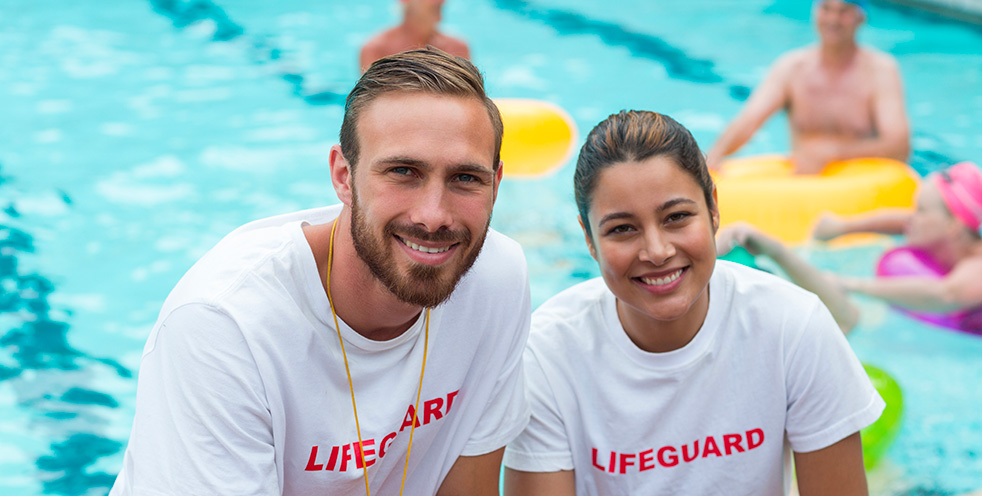Becoming a lifeguard is not just about having strong swimming skills; it’s about being trained and prepared to handle emergencies, ensuring the safety of others in aquatic environments. Lifeguard courses are essential for anyone aspiring to take on this critical role. Whether you’re considering this career path or looking to enhance your skills, this guide will walk you through everything you need to know about lifeguard courses.
Understanding the Importance of Lifeguard Training
Lifeguards are the first line of defense in preventing drowning and other water-related accidents. They need to be vigilant, quick-thinking, and proficient in life-saving techniques. A comprehensive lifeguard courses equips individuals with the skills and knowledge necessary to perform these duties effectively. American Lifeguard USA, a leading provider of lifeguard training, emphasizes the importance of rigorous training to ensure that lifeguards are well-prepared for any situation.
What Does a Lifeguard Course Cover?
Lifeguard courses are designed to provide a blend of theoretical knowledge and practical skills. Here’s a breakdown of what you can expect to learn:
Rescue Techniques: Learn various water rescue techniques, including active and passive victim rescues. This involves approaches, carries, and removals from the water.
First Aid and CPR: Mastery of first aid, CPR (Cardiopulmonary Resuscitation), and AED (Automated External Defibrillator) use is crucial. These skills can be life-saving in emergencies, such as cardiac arrest or injuries.
Surveillance and Prevention: Understanding how to maintain constant surveillance and identify potential risks is key to preventing accidents. You’ll learn how to spot distressed swimmers and intervene before situations escalate.
Legal and Ethical Responsibilities: Lifeguards have significant legal responsibilities. Courses cover the ethical aspects of lifeguarding, including understanding liability, the importance of following procedures, and the legal implications of negligence.
Emergency Action Plans: Developing and executing emergency action plans is a vital part of lifeguard training. This includes coordination with other lifeguards, handling crowd control, and ensuring that emergency services are contacted promptly.
Physical Fitness: Lifeguard courses also include physical fitness tests to ensure that candidates are in good shape to perform the demanding tasks required in this role.
Choosing the Right Lifeguard Course
When selecting a lifeguard course, it’s essential to choose a program that is accredited and recognized by reputable organizations. American Lifeguard USA offers nationally recognized certifications that meet the highest industry standards.
Key Considerations:
Accreditation: Ensure the course is accredited by a recognized body, such as the American Red Cross or the American Lifeguard Association. This guarantees that the training meets industry standards.
Instructor Qualifications: The quality of your training will depend significantly on the expertise of the instructors. Look for courses led by experienced professionals with a solid background in lifeguarding and emergency response.
Course Content: Review the syllabus to ensure it covers all the necessary areas, including CPR, first aid, water rescue, and emergency procedures.
Flexibility: Some courses offer a mix of online and in-person training, which can be beneficial if you have a tight schedule. However, ensure that the practical components are thorough.
Cost and Duration: Lifeguard courses vary in length and cost. While price is a consideration, it shouldn’t be the deciding factor. The quality of training should always take precedence.
The Certification Process
After completing the lifeguard course, you’ll need to pass a final assessment to receive your certification. This typically includes:
Written Test: Assessing your understanding of the theoretical components.
Practical Test: Demonstrating your ability to perform rescues, administer first aid, and execute emergency procedures.
Once certified, your lifeguard certification is usually valid for two years. After this period, you’ll need to undergo recertification to ensure your skills and knowledge remain up to date.
Why Lifeguard Certification is Essential
A lifeguard certification is more than just a qualification; it’s a testament to your ability to safeguard lives. Many employers, including public pools, water parks, and beaches, require certification as a prerequisite for employment.
Benefits of Certification Include:
Employability: Certified lifeguards are in high demand, particularly during the summer months. Your certification opens up numerous job opportunities.
Skill Validation: Certification validates your skills and knowledge, giving you and your employer confidence in your abilities.
Legal Protection: Certification can also protect you legally. It demonstrates that you’ve undergone the necessary training, which is crucial if you’re ever involved in a legal dispute following an incident.
Lifeguard Courses: A Stepping Stone to a Rewarding Career
Completing a lifeguard course is just the beginning. Many lifeguards go on to pursue careers in emergency response, aquatic facility management, or even become lifeguard instructors themselves. The skills and experience you gain as a lifeguard are invaluable and can lead to a variety of rewarding career paths.
Final Thoughts
Enrolling in a lifeguard course is a significant commitment, but it’s one that pays off in more ways than one. Not only will you gain the skills and knowledge needed to save lives, but you’ll also develop confidence, responsibility, and a sense of purpose. With American Lifeguard USA, you’re not just getting certified; you’re joining a community of dedicated professionals committed to safety and excellence.
If you’re ready to take the plunge and start your journey as a lifeguard, choose a course that equips you with the tools you need to succeed. Remember, the best lifeguards are not just strong swimmers—they’re trained professionals ready to act when it matters most.
